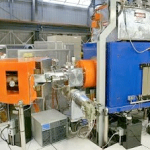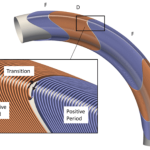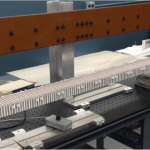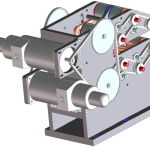BCMT seeks to identify areas where we can provide unique capabilities and expertise to the DOE Office of Science through materials and magnets beyond the proven state of the art. We emphasize magnet systems that enable new science capabilities and that are beyond the capabilities of industry. In this way the DOE and the US get high leverage from initial investments.
Magnets for ECR Ion Sources
|
Medical Gantries
| |
Superconducting Undulator Technology for Light Sources
|
Permanent-Magnet (PM) Systems for Storage Rings
|
|

 The Canted Cosine-Theta (CCT) concept is being applied to
The Canted Cosine-Theta (CCT) concept is being applied to 

